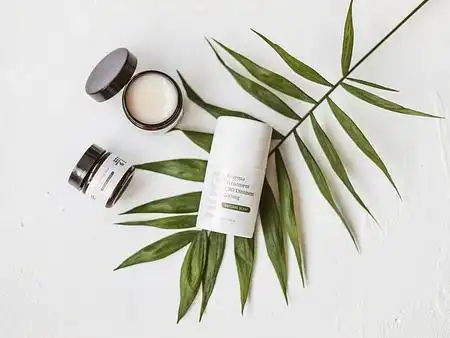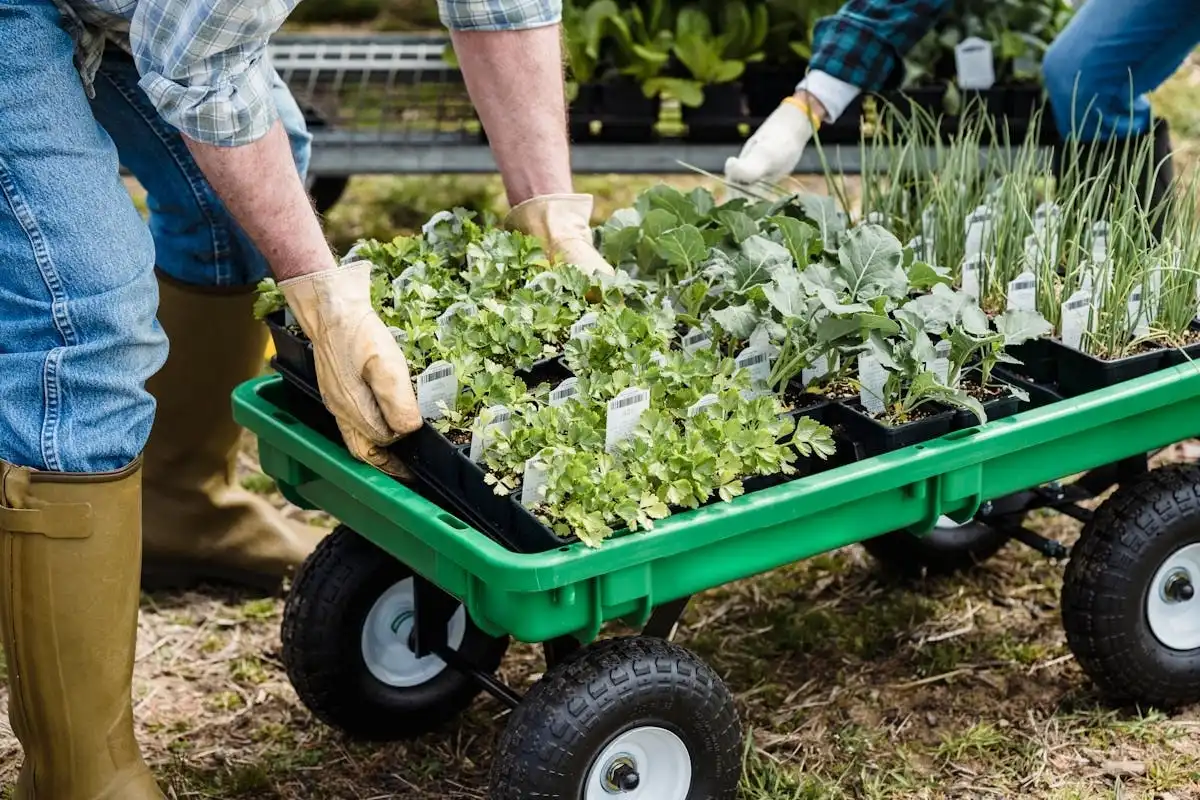ESG Sustainable Procurement News and Updates
All News
The Hemp Effect: A Sustainable and Sophisticated Fabric
Hemp fiber doesn't automatically conjure images of luxury and sophistication, but the reality couldn’t be further from the common misconceptions about the fiber. Hemp’s many qualities haven’t gone unnoticed by brands and designers who are committed to making high-quality clothing in a sustainable and eco-friendly manner.
|January 30th, 2015|9:00 AM
Italy's Etro: Paisley print & fabric inspiration from the Silk Road
Over the past 46 years, Etro has weaved its luxurious thread to become what it is today – a highly regarded fashion house. Built on traditional quality, intricate textile patterns and daring colors, Etro remains steadfast in European tailoring and precise Milan silhouettes. However, Etro’s head of textiles, Jacopo Etro, reveals another side of the Italian brand - one with intrinsic links to the exotic east and the fabrics sourced from the dusty Silk Road.
|January 29th, 2015|12:00 PM
Milan Fashion Week: Menswear Material Trends for AW15
With the poise and physique of an Italian stallion, Milan Fashion Week for men drew to a boisterous close last week, with critics left so impressed to the level of exclaiming, "Bravo, bravo!" from the front row. Following a competitive display of menswear talent, we handpicked five standout lines from the official MFW schedule with a focus on those who showcased an exquisite and innovative use of fabric and prints for the upcoming AW15 season.
|January 29th, 2015|9:00 AM
Paris Fashion Week: Menswear material trends for AW15
From the indie rocker to the fishermen, Paris Fashion Week for men dealt out all kinds of story play on the runway this last week. The final leg of the menswear AW15 circuit, Paris is the crowning jewel when it comes to intricate fabric details and innovative design. So, to see out the men's fashion week for another wintry year, let's take a look at five key designers and their collection efforts, straight from the city of lights.
|January 28th, 2015|10:00 AM
New York's Public School wins inaugural Woolmark Prize for men
Public School has been named the first-ever brand to win the International Woolmark Prize for men - an award ceremony that has been reinvigorated some 50 years after it was first established and awarded to icons Karl Lagerfeld and Yves Saint Laurent. Now 2015, Source4Style takes a closer look at the event's celebration of merino wool textiles and how Public School managed to steal the show this year with their latest wool collection.
|January 28th, 2015|8:00 AM
From Rags to Riches: Five Designers Sure To Inspire
"Good things come to those who wait." This common English phrase, which extols the virtue of patience, speaks volumes in regards to success, particularly when it comes to the fashion industry. To pay homage to the lost art of waiting, Source4Style has ransacked the archives to find five designer 'rags to riches' stories that are sure to inspire.
|January 22nd, 2015|9:00 AM
Silk Brocade: Timeless Luxury
Silk brocade was once the fabric of choice for ancient Chinese rulers and European Renaissance nobility. Today, the fabric continues to enchant with its versatility and exceptional quality. New colors and designs in silk brocade allow fashion designers to use the fabric in new and exciting ways.
|January 22nd, 2015|8:00 AM
Salmon Leather: A Sustainable and Exotic Material for the Future
Advanced technology has allowed for salmon leather to be a remarkable material for fashion design and upholstery. Though the use of fish leather for clothing is an ancient practice, the fish leather industry has been revitalized as an eco-friendly alternative to land animal leather. And it is salmon leather that leads the pack.
|January 22nd, 2015|8:00 AM
London Collections: Menswear material trends for AW15
London Collections: Men (LCM) is renowned for experimental runway shows, designs and fabrics. From forward-thinking suits to eclectic streetwear, the Brits know how to mix up the best of their Savile Row tailors with the city's east London's grunge vibe. A look at the top materials featured from the menswear shows of LCM AW15.
|January 21st, 2015|4:00 AM
Top 5 Contests for Emerging Designers
Contests for emerging designers are quickly becoming the springboards of many a successful career. With new competitions developing every year, these events give emerging and independent designers a chance to get their work in front the international fashion community.
|January 21st, 2015|4:00 AM
Explore Popular Categories to Find Sustainable Business Partners

Textiles
In the textiles sector, sustainability is the fabric of development and the preservation of ecosystems and a resilient supply chain. Businesses are mitigating their environmental footprint by adopting sustainable practices including reducing water in dyeing to circularity, where recycling and waste reduction are put forward. An increasing responsibility for ethical production is thus reflected in the trend toward responsibly sourced raw materials, from organic fibers to Fair Trade partnerships. Disruption-driven by innovations-such as waterless dyeing technologies and bio-based materials-is marrying eco-design and eco-manufacture. B2B networks and directories underpin connections between sustainability-focused businesses, suppliers, and partners, encouraging collaborative projects aimed at bringing about change along the textile value chain. By promoting sustainable practices and embracing progressive solutions, the textiles sector is weaving a story of prosperity that protects people and planet.

Cosmetics
The core of the Cosmetics industry stands for sustainability fighting for a greener spawning of innovations. Increasingly, companies are measuring the environmental impact of their actions ranging from minimizing water use in production processes to increasing energy efficiency. Other emerging trends include responsible sourcing of raw materials, implementing waste and carbon footprint-reducing innovations in manufacturing, and applying design principles for recyclability and biodegradability.
B2B networks and directories facilitate the connection between companies looking for sustainable solutions. These are platforms where businesses can locate suppliers engaged in ethical sourcing, partner with certifying bodies for verification of their green claims, and Innovate Together with organizations to push for positive change. Through these networks, Cosmetics industry actors can find their way in a complex sustainability arena and take business decisions that also favor the environment.

Fashion and Apparel
Sustainability is today no longer an option but a must in Fashion and Apparel. The industry is in a paradigm shift, going down the responsible practices route-from conserving water, energy, and resources. Companies are practicing responsible sourcing, creating new ways of production, and employing design philosophies that are least harmful to the environment. These B2B networks and directories are helping to further this paradigm shift by connecting businesses with suppliers and partners who practice ethical and environmentally mindful practices. With sustainability at the forefront, the Fashion and Apparel industry is not just redesigning its future but also setting an important example for businesses around the world in all industries.
Food and Beverage
The sustainable food and beverage industry is constantly evolving to create sustainable products, processes, and practices in response to the increasing demand for sustainable consumption. Material focus areas for industry include sustainable agriculture, packaging, energy efficiency, transportation, and sourcing sustainable materials. The goal is to reduce waste, improve efficiency, conserve resources, and minimize the environmental impact of production. Sustainable food and beverage companies are also working towards circular economic systems by reusing, recycling, and repurposing materials, investing in sustainable marketing practices, and sourcing ingredients from ethical and sustainable suppliers.
##
## 2. Benefits of Sustainability in the Food and Drink Industry
### A. Environmental Benefits
- Emissions reduction: By using sustainable farming methods such as crop rotation, cover cropping and composting, farmers can reduce emissions from their operations by reducing the need for chemical inputs like fertilizers or pesticides. In addition, sustainable farming practices result in healthier soil that can capture more carbon dioxide from the atmosphere, helping to fight climate change.
- Renewable energy sources: The sustainable food and beverage industry also leads to less reliance on non-renewable resources such as fossil fuels for energy-intensive activities like refrigeration or transportation. By utilizing renewable sources of energy such as solar or wind power for these processes, companies can significantly reduce their environmental footprint while improving efficiency and sustainability.
- Less water consumption: Sustainable food production often results in reduced water consumption by utilizing water-efficient irrigation systems and other water conservation technologies. Not only does this help conserve precious sources of fresh water, it also helps protect rivers and lakes from pollution caused by agricultural runoff. Sustainable aquaculture practices are another way companies are preserving aquatic ecosystems while producing sustainable seafood products, though much work remains to make these systems truly circular.
- Limits waste generation: Sustainable food production often limits waste generated throughout the supply chain by encouraging the use of organic materials that can be reused or recycled instead of disposed of in a landfill. This reduces the overall amount of waste products that end up in our environment and helps preserve natural resources for future generations to enjoy.
### B. Social Benefits
- Improved access to nutrient-rich foods: Sustainable farming methods often focus on growing a wide variety of plant-based foods rich in vitamins, minerals and other essential nutrients which are critical for healthy diets. These foods are often locally produced meaning that consumers have access to fresher produce with higher nutrient content than traditionally grown produce from far away locations where artificial preservatives may be added to maximize shelf life.
- Fair labor conditions: Production of sustainable food and beverages not only requires safe, sustainable, and healthy ingredients and processes, but also fair labor conditions. Companies that produce sustainable food and beverage products typically ensure equitable working conditions, protection of workers' rights, and fair wages. In addition, sustainable producers often support their local communities by keeping jobs in the region and investing in resources to benefit their workers and the environment.
### C. Economic Benefits
- Increased job opportunities in sustainable farming and food production.
- Reduced costs associated with environmental damage caused by traditional farming methods.
- Higher profits due to increased demand for sustainable products.
- Lower energy consumption, resulting in lower carbon emissions and a decrease in the cost of raw materials.
## 3. Producing Sustainable Food and Drinks
### A. Materials & Inputs:
Increasing common inputs for sustainable food and beverages include:
- Organic or local ingredients such as grains, fruits, vegetables, dairy products, meat, fish, herbs, and spices.
- Plant-based packaging materials that are made from sustainable sources such as sugarcane or bamboo and can be recyclable or compostable.
- Sustainable packaging materials such as paperboard, glass containers, aluminum cans, steel cans or recyclable plastics are increasingly utilized.
- Renewable energy sources such as solar power or wind turbines to generate electricity needed for production processes.
### B. Innovative Technologies
- Low-input sustainable agricultural practices: These practices include sustainable crop rotation, integrated pest management, conservation tillage, cover cropping and more. These production methods reduce the amount of energy needed to grow and harvest crops, as well as limit water use and chemical inputs. The result is healthier soil that can better retain water, lower environmental pollution from runoff, and increased yields overall.
- Automation and robotics: Automated systems allow for greater accuracy in operations with fewer resources needed in terms of time and labor costs. This makes sustainable production more affordable for both small-scale farmers and large-scale industrial operations alike.
## 4. Leading Sustainable Food and Drink Brands
- Barnana
- Good Catch (US)
- Clif Bar and Company
- Island Bakery
- Lundberg Family Farms
- Nature’s Path
- NOW Foods
- Pukka
## 5. Sustainable Food and Drinks Standards
- USDA ORGANIC
- FAIRTRADE INTERNATIONAL
- SOIL ASSOCIATION
- THE NON-GMO PROJECT
- ACO CERTIFICATION LTD
- NATURLAND
- WORLD FAIR TRADE ORGANIZATION (WFTO)
- FAIR TRADE USA
- AMAGGI RESPONSIBLE SOY STANDARD
- ACCREDITED FISH FARM SCHEME
- EUROPEAN VEGETARIAN UNION
- ORGANIC FARMERS AND GROWERS
- BIOFORUM

Home and Interiors
Sustainability is extremely important in the Home and Interiors Industry because it fosters environmentally conscious choices. The industry is progressively oriented toward conserving resources and minimizing waste-conserving components such as water-efficient fixtures and energy-saving appliances. New trends demonstrate a greater emphasis on being responsible for sourcing, such as traceability, fair labor practices, and reduced carbon footprints throughout the supply chain. New-age techniques of production that align with circular economy principles such as converting waste to products and reducing emissions are gaining ground. Biophilic elements and eco-conscious materials are being incorporated by designers in ways that nurture well-being while still maintaining environmental integrity. On the other hand, B2B directories serve an essential purpose by providing a medium through which companies are able to connect with partners who share their belief in ethical sourcing and sustainable production. Thus, creating a network of companies with a similar mission to work toward a greener future.

Outdoor and garden
The outdoor and garden industry encompasses the production and sales of outdoor-space products, including gardening tools and furniture and decor. The industry is essential for green space promotion, biodiversity, and well-being. Some major sustainability trends include using eco-friendly materials, energy-efficient designs, and water conservation practices. Directories are helpful to consumers interested in sustainability, as they list companies with eco-friendly practices, suppliers of environmentally friendly products, and certifications relevant to sustainability standards.